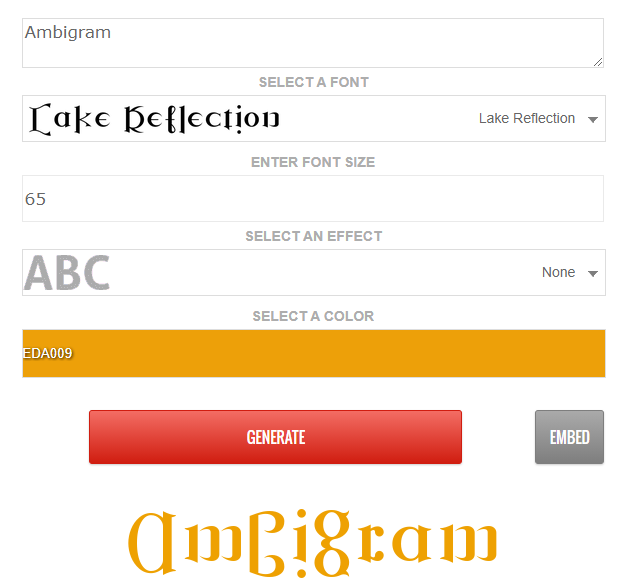Registering a domain name is the initial process in developing your online brand especially for business, personal use, or project. A domain name is a web address that is used to locate your site through the internet in case someone wishes to visit your site. Selecting the right domain name and doing it right protects a piece of internet space that is prospering in the realm of cyberspace.
This article will guide you how to register a domain name, from choosing the perfect name to completing the registration process. Everything you need to do to be able to fill in the first gap of your internet presence will be outlined in this segment.
What is a Domain Name?
A domain name is as important as the road name is to a building as it is an address through which people can locate a website on the internet. It is the text that ordinary people enter into their browser to get to a particular website on the Internet. For example, google. com is the domain extension for Google company.
Think of it like a street address. Just as you wouldn’t remember a long string of numbers for your house, it’s difficult for people to remember complex numerical IP addresses (like 192.0.2.2) that computers use to communicate. Domain names make it easier for people to find and remember websites.
The Domain Name System (DNS) essentially works as looking up service because it translates the easily remembered domain name to its IP address that can be understood by computers. As a result, this process is commonly referred to as DNS lookup.
Domain names are at the disposal of the domain registries with the actual assignment and allocation of domain names being carried out by registrars. Domain registrars are these service providers such as GoDaddy, Namecheap, Google Domains that sell domain names and offer domain services.
Therefore, in a nutshell, a domain name is a way or medium that links the human world with the computer world the world of the internet.
Why Do You Need a Domain Name?
A domain name is not just a catchy website address, but a significant component to the foundation of an excellent web marketing campaign. Here’s why:
- Establish Credibility and Professionalism: Well, a custom domain name makes your website look more professional and trustworthy immediately when added. It gives potential customers and clients the impression that you are real business entity with a future.
- Boost Brand Recognition: People can easily remember domain name of a brand or website to visit later. This way, it is easier for them to locate you again, and be able to share your website with other persons.
- Improve Search Engine Optimization (SEO): Some of the ways that your website can benefit from having a relevant domain name includes the following; This means more users will be able to locate your website whenever they’re searching for keywords related to what your site is offering.
- Control Your Online Identity: Having your own domain means that you are your own boss in the world of internet. As you can select your own email, design your website’s look and feel, also update content using Website builders without using other people’s services.
- Protect Your Brand: Registering a domain name can assist you to prevent yourself from a situation when someone uses your brand for his or her needs. It’s if you have your own business name or trademark, for example, because no one can know it better than you do.
In short, a domain name is an essential investment for anyone who wants to establish a strong online presence. It’s the foundation of your website and a key factor in building a successful online business.
How to Register a Domain Name
Here’s a step-by-step guide on how to register a domain name:
- Choose a Domain Registrar: A domain registrar is a company that sells and manages domain names. Some popular registrars include:
- GoDaddy: One of the largest and most well-known registrars.
- Namecheap: Known for its affordable prices and wide range of domain extensions.
- Google Domains: Offers a simple and user-friendly interface.
- Domain.com: Provides a variety of domain extensions and hosting services.
- Choose a Domain Name: This is the most important step. Your domain name should be:
- Memorable: Easy to remember and spell.
- Relevant: Reflects your website’s content or brand.
- Available: Check if the domain name you want is already taken.
- Select a Domain Extension: This is the part of the domain name that comes after the dot (e.g., .com, .net, .org). The most common extension is .com, but there are many others to choose from.
- Complete the Registration Process: Once you’ve chosen your domain name and extension, you’ll need to provide your personal information and payment details.
- Confirm Your Registration: You’ll receive an email confirmation from the registrar. Click on the link in the email to complete the registration process.
Tips for Choosing a Domain Name
- Keep it Short and Simple: Aim for a domain name that’s easy to remember and spell. Avoid using long, complicated words or phrases.
- Use Relevant Keywords: Include keywords that people might search for when looking for your website. This can help improve your website’s SEO.
- Avoid Hyphens: Hyphens can make your domain name harder to remember and type.
- Check for Availability: Make sure the domain name you want is available. You can use a domain name search tool to check.
- Consider Different Extensions: Explore options beyond .com, such as .net, .org, or .co.
- Make it Brandable: Choose a domain name that reflects your brand identity and is consistent with your other marketing materials.
- Test it Out: Say your domain name out loud and ask others to do the same. Make sure it’s easy to pronounce and understand.
- Think Long-Term: Choose a domain name that you’ll be happy with for years to come. Avoid using trends or fads that might become outdated.
Additional Considerations
- Domain Privacy: You can purchase domain privacy to protect your personal information from being publicly displayed in the WHOIS database.
- Domain Transfer: If you want to move your domain name to a different registrar, you can transfer it.
- Domain Renewal: You’ll need to renew your domain name annually to keep it active.
What If Your Domain Name Is Already Taken?
You select a terrific domain name. You go to a domain name registrar’s website, type it in, click check availability, and a message pops up on your screen saying that the domain name is already taken.
Just because a domain name has already been grabbed by someone else doesn’t necessarily mean there isn’t a way to acquire that domain name or use a variation of it. Take a deep breath. You still have options.
Using an Extension Variation
Say you’re planning to create an information website for people who want to experience the adventure of teaching English in China and other parts of the Orient. On your short list of domains is TeachInTheOrient.com. But when you check the availability of that name, you despair. It’s taken.
One possible solution is to use a different extension. The .com version of the name is gone, but the .net or .org versions may still be available. There are also .tv, .biz, .me, or .info. These can all be viable options, especially if the domain you want is registered but not being used as a website.
If your website is going to target only those who live in a specific country, then you might consider a country-specific domain name extension. In addition to the global extensions that we’re all used to seeing—.com, .net, .org—each country has its own unique extension. In the United States, it’s .us. In Canada, it’s .ca. In the United Kingdom, it’s .co.uk.
Using a Spelling Variation
An alternative spelling is another way to vary a domain name if the one you want is taken. Just because NeatKnitting.com is already registered doesn’t mean you can’t use the phrase “Neat Knitting” in your domain name. Here are just a few possibilities.
- Neat-Knitting
- NeatKnittingOnline
- NeatKnittingStore
- TheNeatKnittingStore
- ThatNeatKnittingStore
- NeatKnitters
- Neat-Knitters
- NeatKnittingSupplies
- NeatKnittingSite
- NeatKnittingShop
- NeatKnittingNow
As you can see, there are dozens of alternative domain names that may be up for grabs. So turn on your imagination and do some brainstorming, using the previous list as a guide. You might be surprised to discover that an even more desirable domain name emerges from the exercise. If brainstorming fails you, consider buying the domain name you wanted from its current owner.
Conclusion
Register your domain name is a crucial step in establishing your online presence. By following these steps and considering the tips above, you can choose a domain name that’s perfect for your website and brand.






